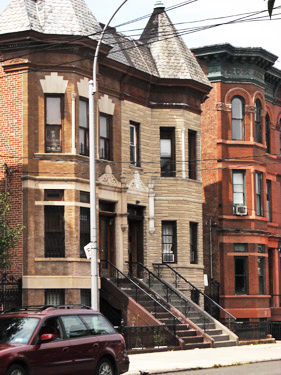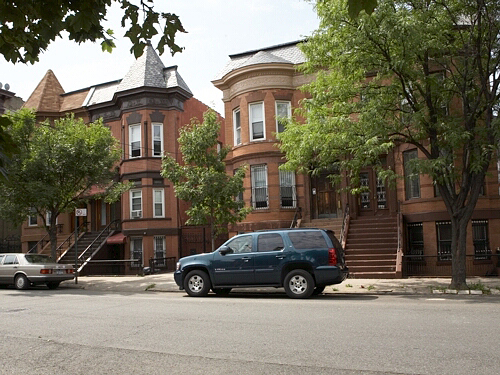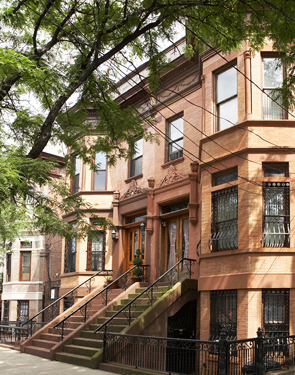Longwood
Historic District
Includes buildings on Dawson, Kelly, Beck, and Macy Streets
|
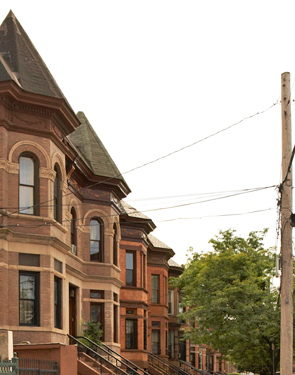 |
Built at the turn of the 20th century, the Longwood Historic District is an enclave of primarily two and three story row houses constructed in anticipation of the population surge expected into the area. Real estate developer George B. Johnson purchased the old S. B. White estate on speculation and hired architect Warren C. Dickerson (also known for his work on Mott Haven Historic District structures) to design and construct houses. By the time that the IRT subway line from Manhattan reached the neighborhood in 1904, Dickerson’s houses were completed and clustered nearby.
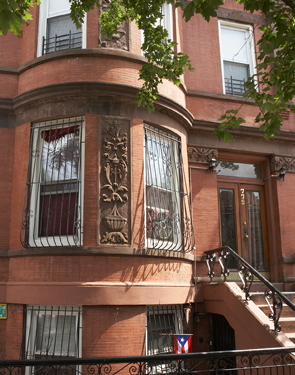
Because Dickerson built most of the houses in the District, there was a harmony and cohesiveness in their size and style. They were created primarily in the neo-Renaissance and Romanesque Revival tradition with enough variation in design elements to deter stylistic monotony. The houses feature double doors of framed glass, bay windows, and decorative trims. They are set back from the street by either a wide stoop framed by iron railings; or otherwise feature small gardens or lawns at the front that lend a feeling of spaciousness. Side driveways and decorative iron gates separate semi-attached houses, while tree lined streets create a pleasant streetscape.
That this concentration of early 20th century houses endures in such a heavily urbanized neighborhood is architecturally significant. Remarkably, even with one of the lowest per capita income levels in New York City, this area survived the devastation that affected so much of the surrounding South Bronx from the 1970s into the 1980s. Its high percentage of long-term owner-occupied dwellings stabilized the District, as did the presence of the nearby Prospect Hospital (now closed). What really made the difference, however, was the grass roots formation of a Longwood Historic District Community Association that rallied community support for landmark status.
In 1980, the city’s Landmarks Preservation Commission granted historic district status, and in 1983 even expanded the District to include houses on Macy Place. The National Register of Historic Places also bestowed landmark status to the District in 1983.
The Association recognizes that what is good for the neighborhood is good for the historic District. Having landmark status on both local and national levels has helped the Association successfully secure government and private funding to enhance and restore the District, as well as other neighborhood buildings.
Janet Butler Munch
Photographs:
Abigail McQuade
